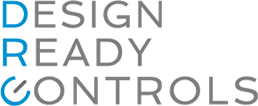Efficient Lighting Updates Manufacturing Facilities
Lighting affects the quality of working conditions in every profession. Not many people are productive and happy working by the light of a single, bare bulb in a dim room. In manufacturing, poor lighting can affect employee well-being, productivity, product quality, and safety. Facility lighting design that meets the needs of a business is essential to its success.
How Lighting Affects Quality of Working Conditions
Dim lighting in work environments can cause eye fatigue, drowsiness, lack of focus, loss of productivity, and diminished quality. Poor lighting has also been shown to reduce employee morale, increase employee absenteeism, and contribute to higher employee turnover. Harsh lighting can cause headaches, distraction, irritability, lower productivity, and declining quality. These can be disastrous for any business, especially a manufacturing company.
Footcandles
Lighting for the new Design Ready Controls headquarters and production facility in Brooklyn Park, Minnesota, was carefully planned. We considered many factors, including color temperature, ceiling height, light uniformity, and angle of light distribution. We worked to avoid shadows and dim areas in order to have a safe environment, lean processed, and high quality products. Initially, we wanted to make the production floor bright as an operating room—around 150 footcandles—but decided that might be too intense for comfort. The final design features 90 footcandles in the production area and approximately 40 footcandles in the warehouse—about double the industry standard of 30–50 footcandles for production work and 20 footcandles for warehouses.
Benefits of Efficient Lighting
Our new facility was designed to maximize product quality and process efficiency. Large windows and skylights were added to both the production floor and office spaces to allow as much natural light in as possible. Daylight, the least expensive and most environmentally friendly lighting, was a natural choice. Timers and sensors throughout the building help create a balance between artificial lighting and natural light, supplementing daylight whenever necessary.
Research indicates there are long-term cost savings beyond energy efficiency savings. Other companies report cost savings through higher productivity, improved quality, new customers, higher staff retention, good publicity and more as a direct result of improved lighting design. These are savings we can pass on to customers, making us a stronger, more competitive manufacturing business.
Even if a new building isn’t in the works for your company, you can try these easy and inexpensive ways to improve facility lighting:
1. Ensure all windows and skylights are clean and unobstructed
2. Replace damaged or outdated bulbs and light fixtures
3. Use uniform lighting within a single area
4. Remove any unnecessary drywall that blocks natural lighting
5. Move or remove unnecessary partitions
6. Use light or translucent window dressings
7. Use transparent or translucent materials, such as glass doors, wherever possible
8. Redistribute employee seating to maximize beneficial light
9. Remember that lighting is for people, not just tasks: comfortably light all employee areas

